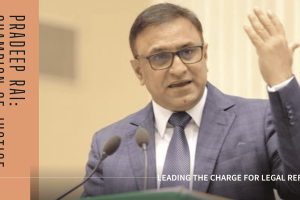Dr. Manmohan Singh, India’s renowned economist and the 13th Prime Minister of India, is often credited with transforming India’s economic landscape. His contributions, particularly during his tenure as the Finance Minister in the early 1990s and later as Prime Minister (2004–2014), have significantly impacted the Indian Micro, Small, and Medium Enterprises (MSME) sector.
The MSME sector, often referred to as the backbone of India’s economy, accounts for about 30% of the country’s GDP, employs millions, and contributes significantly to exports. Let’s take a closer look at how Dr. Manmohan Singh’s policies and vision shaped the growth and resilience of this critical sector.
The 1991 Economic Reforms: A Lifeline for MSMEs
Dr. Manmohan Singh’s tenure as Finance Minister under Prime Minister P.V. Narasimha Rao marked a turning point for India’s economy. The economic liberalization of 1991, spearheaded by Singh, opened up India to global markets, deregulated industries, and reduced bureaucratic red tape. This wave of reforms had the following impacts on MSMEs:
Access to Global Markets: The liberalization policies encouraged MSMEs to participate in global trade, providing them with opportunities to export their products and services. This exposure to international competition pushed many MSMEs to innovate and improve quality standards.
Simplification of Licensing: The abolition of the License Raj reduced the entry barriers for small businesses, allowing them to focus on production and growth instead of grappling with complex regulatory processes.
Access to Credit: The economic reforms laid the groundwork for financial sector liberalization, increasing access to credit for small businesses through banking reforms.
The MSMED Act, 2006: A Defining Legislation
As Prime Minister, Dr. Manmohan Singh’s government introduced the Micro, Small and Medium Enterprises Development (MSMED) Act in 2006, a landmark initiative aimed at strengthening the MSME ecosystem. Key features of the Act include:
Formal Definition of MSMEs: For the first time, MSMEs were defined based on their investment in plant, machinery, and equipment. This classification brought clarity and helped design targeted policies.
Simplified Legal Framework: The Act provided a unified framework for the development of MSMEs, enabling smoother coordination among various stakeholders.
Credit and Marketing Support: Provisions under the Act ensured better access to credit and encouraged procurement of MSME products by public sector enterprises, thereby creating a robust market for small businesses.
Credit and Financial Inclusion
During Singh’s tenure, several measures were introduced to improve credit access for MSMEs:
Priority Sector Lending: Dr. Singh’s government mandated that banks allocate a certain percentage of their lending to the MSME sector, ensuring steady credit flow.
SIDBI Revamp: The Small Industries Development Bank of India (SIDBI) was strengthened to cater to the financial needs of MSMEs, with schemes like the Credit Guarantee Fund Trust for Micro and Small Enterprises (CGTMSE) gaining traction.
Interest Subvention Schemes: Interest subvention schemes were introduced to reduce the financial burden on small businesses, particularly in sectors like textiles and manufacturing.
Establishment of SME Exchanges: Under Singh’s leadership, SME exchanges were established to enable small and medium enterprises to raise capital through equity markets. This innovation provided MSMEs with a much-needed avenue to secure funds for expansion and growth.
Promoting Innovation and Technology
Recognizing the need for technological advancement in MSMEs, Singh’s government launched initiatives to foster innovation:
National Manufacturing Competitiveness Programme (NMCP): Introduced to boost the productivity and competitiveness of MSMEs, this program focused on technology upgrades, lean manufacturing, and quality certifications.
Cluster Development Approach: By promoting cluster-based development, the government facilitated the growth of MSMEs in concentrated regions, enabling shared infrastructure and collective bargaining power.
Skill Development Initiatives: Vocational training programs were launched to enhance the skills of the workforce in MSMEs, addressing the challenges of productivity and innovation.
Focus on Export Promotion
Under Singh’s leadership, various export promotion schemes were introduced for MSMEs:
Duty Drawback Schemes: These schemes provided tax benefits to MSME exporters, reducing their financial strain.
Market Development Assistance (MDA): The MDA program supported MSMEs in exploring international markets through trade fairs and exhibitions.
Infrastructure Support: Export-oriented MSMEs benefited from improved infrastructure, including the establishment of Special Economic Zones (SEZs).
Social and Economic Impact
Dr. Singh’s policies had a profound social and economic impact on the MSME sector:
Job Creation: Millions of jobs were generated in the MSME sector, particularly in rural and semi-urban areas, helping alleviate poverty and reduce income inequality.
Women Entrepreneurs: By improving credit access and reducing entry barriers, his policies encouraged women entrepreneurs to enter the MSME space.
Rural Industrialization: Focus on rural MSMEs helped bridge the urban-rural divide and promoted inclusive economic growth.
Challenges and Legacy
Despite these achievements, the MSME sector faced challenges such as inadequate infrastructure, delayed payments, and high compliance costs. However, Dr. Manmohan Singh’s vision and policies provided a strong foundation for the sector’s growth. His emphasis on liberalization, financial inclusion, and innovation continues to inspire policymakers.
Lessons for the Current Government
The current government can draw several lessons from Dr. Manmohan Singh’s approach to strengthening the MSME sector:
Focus on Financial Inclusion: Ensuring seamless access to credit through strengthened financial institutions like SIDBI and implementing robust credit guarantee schemes can help MSMEs thrive.
Simplify Regulatory Frameworks: Reducing bureaucratic hurdles and creating a business-friendly environment are crucial for the growth of small businesses.
Invest in Technology and Skill Development: Encouraging innovation through technology upgrades and providing skill development opportunities will help MSMEs stay competitive in global markets.
Support Exports: Promoting MSME exports through market development assistance, trade fairs, and tax benefits will help businesses expand their reach.
Promote Inclusive Growth: Addressing the needs of rural and women entrepreneurs can ensure balanced and inclusive economic development.
By adopting a holistic and inclusive approach, the current government can build on the strong foundation laid by Dr. Manmohan Singh and empower MSMEs to become a driving force of India’s economic growth.
Conclusion
Dr. Manmohan Singh’s contributions to the Indian MSME sector cannot be overstated. His economic reforms, progressive legislation, and focus on credit, innovation, and exports transformed the sector into a key driver of India’s economic growth. As India continues to evolve, the foundations laid by Singh serve as a guiding light for the MSME ecosystem to achieve new heights of success.












Add Comment